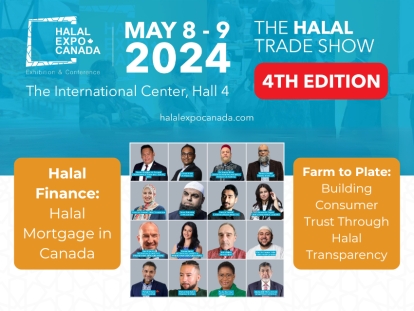 Muslims in Canada have been pioneers in developing a system that makes it possible for Muslims to buy homes through completely halal means. Since 1980, Ansar and Islamic Cooperative Housing Corporation has been enabling Muslims to purchase homes without using mortgages or interest while also providing an opportunity for halal investment.
Muslims in Canada have been pioneers in developing a system that makes it possible for Muslims to buy homes through completely halal means. Since 1980, Ansar and Islamic Cooperative Housing Corporation has been enabling Muslims to purchase homes without using mortgages or interest while also providing an opportunity for halal investment.
Dec
Interest Free Home Ownership – How Does It Work?
Written by Sawitri MardyaniOne of the biggest challenges Muslims face when it comes to reconciling their faith with their finances is home ownership. With house prices starting in the hundreds of thousands of dollars, how is it possible to buy a house without borrowing money through an interest-based mortgage?
This isn't a new issue. In fact, Muslims in Canada have been pioneers in developing a system that makes it possible for Muslims to buy homes through completely halal means. Since 1980, Ansar and Islamic Cooperative Housing Corporation has been enabling Muslims to purchase homes without using mortgages or interest while also providing an opportunity for halal investment.
With mortgages being so common that home ownership is thought to be impossible without one, the natural question is, how does it work? Is it really different from a conventional mortgage? Or are they charging a fee like interest but calling it something else?
Islamic home financing through a diminishing partnership
Pervez Nasim, founding member and chairman of Ansar and Islamic Cooperative Housing Corporation, explains how the Islamic financing model works and how it's different from the conventional home mortgage.
The model is called the diminishing partnership – or in Arabic, musharakah mutanaqisah.
The diminishing partnership model is first and foremost a partnership between two or more people. To explain, Nasim gives an example of two friends who decide to buy a $100,000 apartment to profit from the rent. Each partner puts in $50,000 in cash and rents it to a third person for $1,000/month. This rent is divided equally. Each partner gets $500/month in rent. This is an example of a partnership or musharakah.
Now imagine that instead of renting out the apartment to a third party, one of the two partners lives in it himself. Instead of paying $1000/month in rent, and taking his share for himself, he just pays his partner $500/month. This is still an example of a partnership or musharakah.
Now, let's say the partner who lives in the apartment would like to one day own all of it himself. What he can do is slowly buy out his friend's portion. If one month he pays his friend $5,000 to buy out a portion of the house, his contribution towards the cost of the $100,000 house is now $55,000 (the original $50,000 plus the additional $5,000 he paid now) so he now has a 55% share while his friend has a 45% share. As a result, for the next month of rent, instead of paying his friend $500, he pays $450.
If, a few months later, the person living in the apartment pays his friend another $5,000 to buy out a portion of the house, his share of ownership now increases from 55% to 60% and the rent that he pays his friend goes down from $450 to $400.
This is what we call musharakah mutanaqisah or a diminishing partnership.
Now, instead of two friends partnering up to purchase a property, imagine that it's the home buyer and an institution who are partnering to purchase a home together.
This is the model that was developed by the Islamic and Ansar Cooperative Housing Corporation.
How is this different from a conventional mortgage?
In a conventional mortgage, the home buyer borrows money from the bank and pays that money back, with interest, using the home as collateral. The home owner pays the bank regular mortgage payments (usually monthly) over a fixed period (usually 25 years).
These mortgage payments are made up of the principal (i.e. the amount that was originally borrowed from the bank) and the interest.
At first, the bulk of each mortgage payment is interest. For example, if a home buyer borrows $250,000 from the bank for a 25 year mortgage at a 5% interest rate, the monthly payments will be $1,454.01 These numbers can be obtained using an online mortgage calculator.
After one year (12 monthly payments x $1,454.01 per month), he would have paid the bank $17,448.12. At the end of that year, however, he would still owe the bank $244,806.88. This is because only $5,193.12, or less than 30% of what he paid the bank went into paying back the original loan. A little over 70% of those payments was for interest.
Over time, the proportion of the monthly payment that goes towards interest will decrease while the amount that goes towards paying off the principal increases. After ten years, and paying $175,481.20 in payments, he would owe the bank $184,490.69. At this point,$65,509.31 or 37% of his payments went towards the principal of his loan, while slightly less than 63% went to interest.
Because the house is collateral on the mortgage, if at some point, the home owner isn't able to pay the mortgage payments, the bank can initiate foreclosure proceedings. They can repossess the house and sell it to get back the money that they are still owed. This would leave the home buyer with nothing. Even if they had paid the mortgage payments faithfully over years or decades. Even if the sum of their mortgage payments was greater that than the amount that they originally borrowed.
From the beginning of the transaction, the diminishing partnership model is very different from a conventional mortgage. One, in the diminishing partnership the home belongs to both partners. If, at any time, the house is going to be sold, each partner will receive part of the sale price according to the proportion of the house that they own.
In a conventional mortgage, the bank must be paid back whatever they are owed, regardless of the selling price of the home. This is where homeowners get into the situation of “underwater mortgages”. If property prices drop, it's possible for a homeowner to end up owing more on their house than the house is worth.
Take the example of a homeowner who buys a $277,777 house with a 10% down payment and a $250,000 mortgage and then the following year, the economy slows down, she loses her job, gets a new one somewhere else, and then needs to move. It's very possible that due to the economic slow-down, the house price drops to $230,000. This would leave the homeowner underwater on her mortgage because she owes the bank more than the house is worth.
As mentioned earlier, after a year of paying $17,448.12 in mortgage payments, on this 25 year mortgage at a 5% interest rate, the homeowner would still owe the bank $244,806.88.
So even if a buyer was willing to pay the new market price of $230,000, ownership of the house could not be transferred until the homeowner has paid the bank $244,806.88. She needs to find another $14,806.88, just so she can move out.
Now suppose that this was a diminishing partnership model and she bought a $277,777 house, contributing 10%, or $27,777 while the other partner contributed $250,000. To keep it simple, let's say she only paid the minimum rental payments and didn't increase her portion of the ownership of the house at all. If, after a year, she wants to move and the house price is $230,000, she still owns 10% of the home, so she would get back $23,000 while the partner gets the remaining 90% or $207,000.
Two, instead of paying the financier principal plus interest over a fixed period, the homeowner in the diminishing partnership would pay rental payments plus whatever amount they would like to increase their ownership share of the property. The more the homeowner pays towards increasing their share of the property, the lower their rental payments become and the more quickly they would be able to complete ownership of the house. It's not a fixed schedule, though, so if the homeowner is only able to afford the minimum rental payment for some time, that works as well.
Three, diminishing partnership has no concept of foreclosure. The title of the house remains under the co-operative until the house is paid off, but the co-operative is not allowed to sell off the house and keep all of the proceeds to recoup its initial investment.
The ownership of the house is shared from day one and it remains shared until the home owner completes the purchase of the home or the house is purchased by someone else.
Most importantly, though for observant Muslims, the diminishing partnership model allows them to purchase a home without borrowing on interest – which is expressly prohibited in the Qur'an.
How does Islamic home financing work in practice?
Who has such sums of money that they're willing to use to help others buy houses while getting rent from their portion of the property? What mechanisms do we have in place?
When faced with the need to find interest-free financing for Muslims to purchase homes in Canada, the founding members of the Ontario-based Islamic and Ansar Cooperative Housing Corporation (ICHC and ACHC) tried looking overseas for financial support.
Unable to find such support, they turned to each other and decided to pool their own money in a co-operative. ICHC and ACHC have thousands of members and has partnered with hundreds of families to purchase homes. The money comes from the members themselves. To become a member, you need to pay a one-time $75 membership fee and become a shareholder by purchasing minimum six shares at $100 each.
The money from these shares is used to help members purchase homes. The rental income that the co-operative gets from these homes, as well as any profits from they get from the sale of homes is then distributed as dividends for the shareholders. These dividends are calculated quarterly and distributed annually.
The amount that shareholders earn in dividends fluctuates from year to year due to changes in the housing and rental markets. When the average market rent goes up relative to house prices, the co-operative earns more rental income and dividends go up.
When house prices go up without a corresponding increase in market rents, dividends tend to be lower. In every year since its inception in 1980, members of the co-operative have received dividends between 3-10%.
Learn more about Ansar and Islamic Cooperative Housing Corporation in the Muslim Link Directory here.
Here's a 3 minute video illustrating the concept of the diminishing partnership:
This article was produced exclusively for Muslim Link and should not be copied without prior permission from the site. For permission, please write to info@muslimlink.ca.















